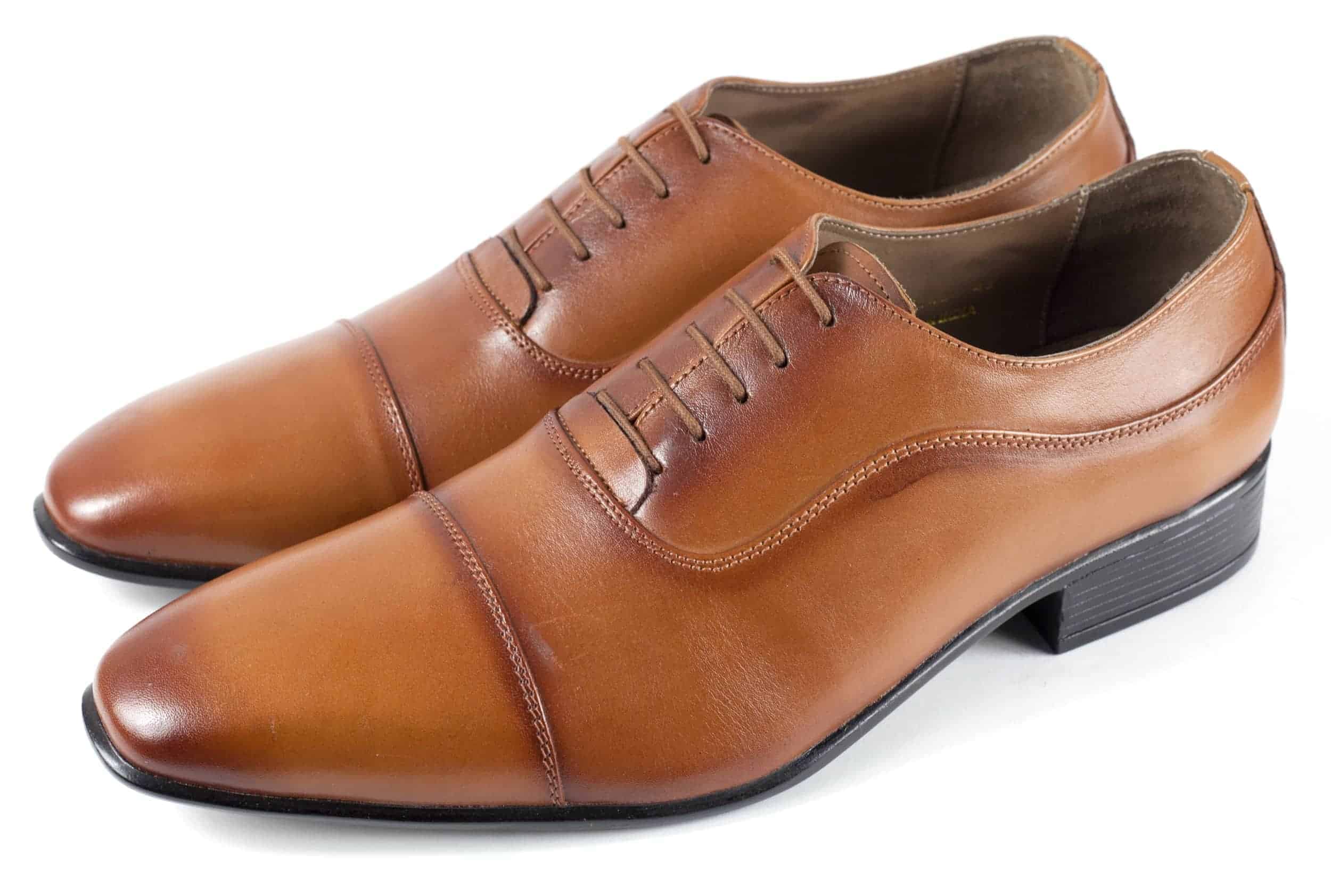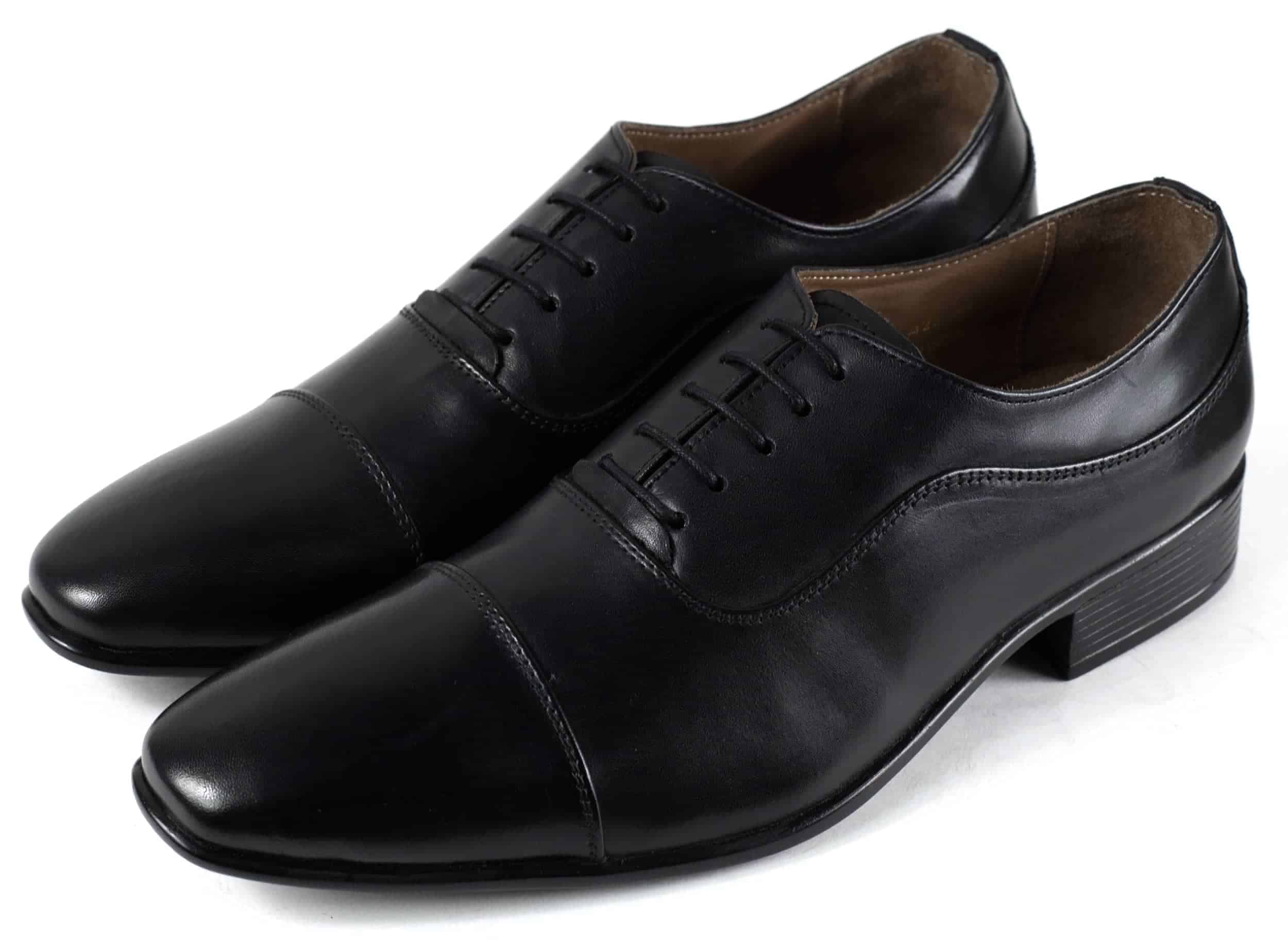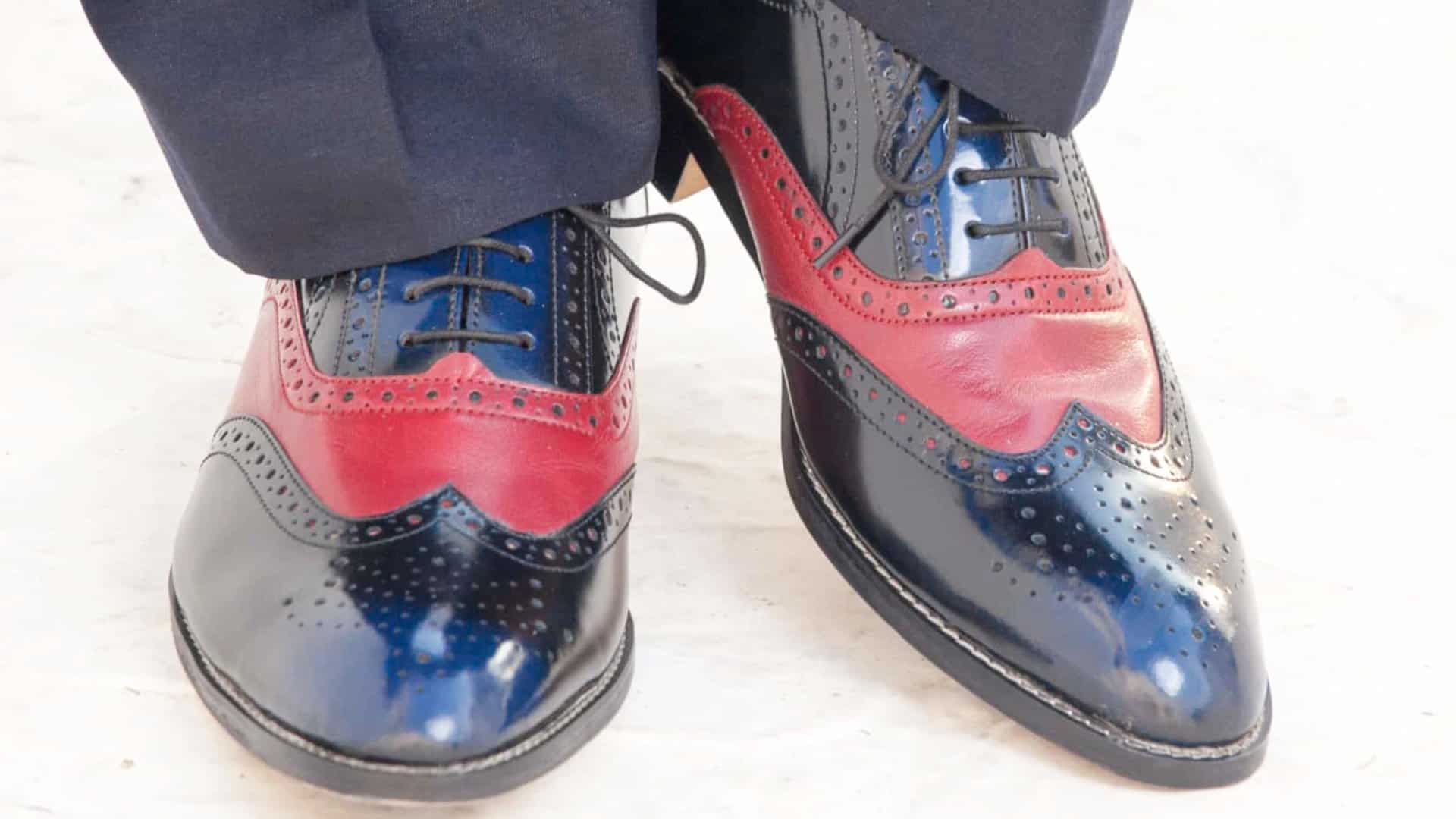
A dress shoe is a shoe that is worn at formal and smart casual events. Many people use dress shoes as daily wear, but it is used, widely, for special occasions, parties and dances. Dress shoes are commonly found in shades of brown and in black. However, other colors include white, burgundy, oxblood, chestnut and cordovan.
Dress shoes are, usually, made entirely of leather except for the sole. Leather gives a sleek and elegant look to the shoe. There are shoes with leather soles. Double leather soles are used to make a rustic and robust shoe. But these are less comfortable, and warmer.
However, leather is porous and if wet, turns slippery. Therefore, for better grip and durability, the sole is made with rubber. Rubber soles are more popular as they allow for repairs to be made easily. Shoes with a crepe (textured rubber) sole, are generally not worn with formal suits. The crepe sole is lightweight, used in desert boots and can wear quickly. Dainite (a British brand) introduced rubber soles which gave more protection and durability to dress shoes.
ANATOMY OF A DRESS SHOE
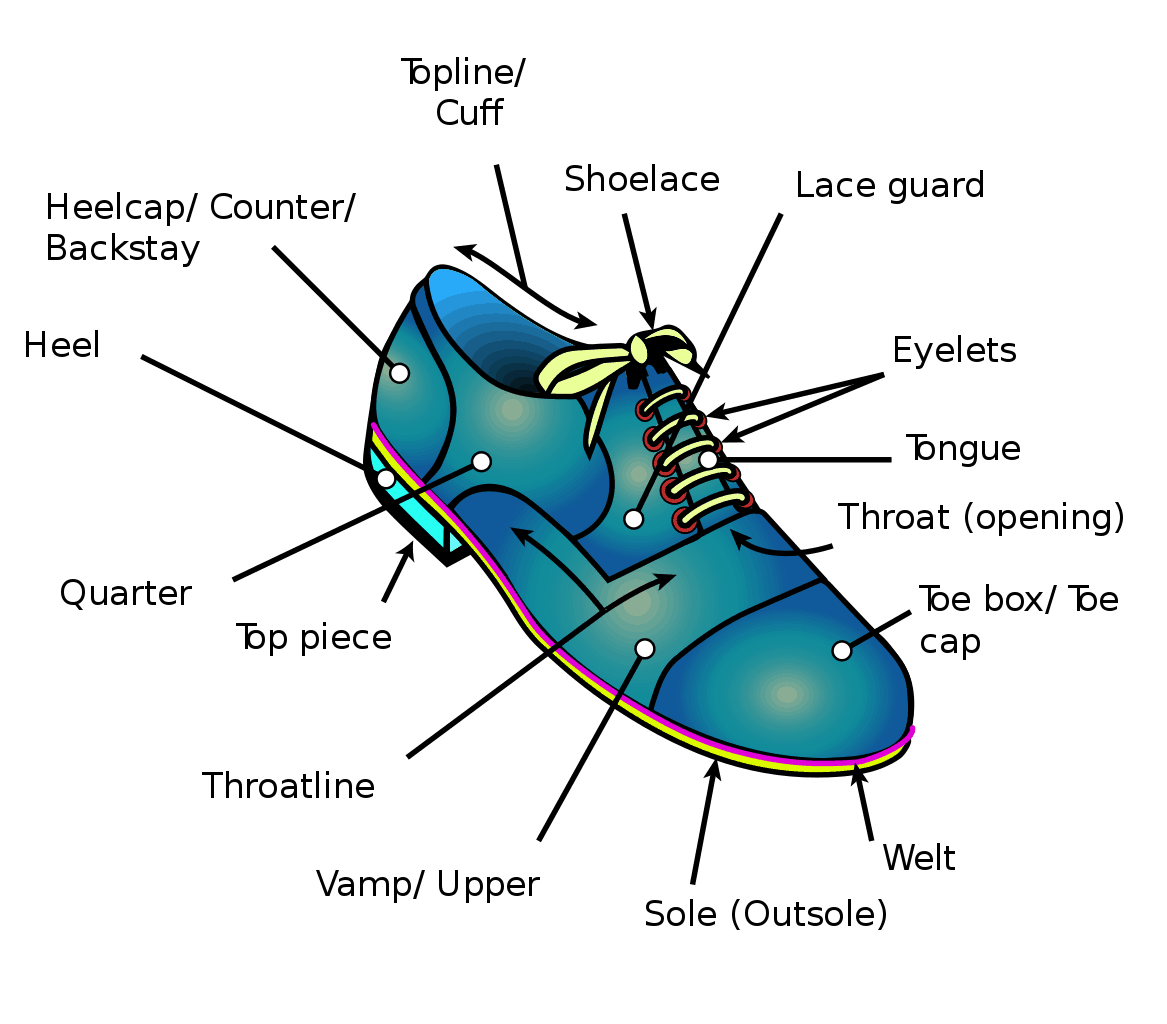
Many pieces of leather come together to make a shoe. They are as follows:
1. The Upper
This refers to the part of the shoe that covers the foot. It can be divided into various parts like the Vamp, Heel, Eyelets, Toe Cap, Quarter etc.
Vamp
This is the leather that covers the instep. It is usually secured over the tongue and under the quarters. Moreover, the top portion of it, which is running below the lacing and quarters is usually called the throat.
Heel Stack
This is the leather that forms part of the outsole. This is made out of synthetic materials like rubber if the sole is synthetic. In full leather shoes, they are made from stacks of leather.
Eyelet
This refers to the holes punched in the leather, in which laces are inserted.
Toe cap
The front part of a dress shoe can have a cap like covering to provide strength and durability to the front part of shoe. This can either be a stitched layer of leather or solid covering of some other material. For example : steel toe shoes have a toe cap made of steel.
Quarters
This is the part of the upper that starts near the laces, and runs around the heel, to under the ankle bone. If the quarter is stitched under the vamp, it is known as closed lacing. However, if the quarter is stitched over the vamp, it is called open lacing.
2. The Outsole
This is the part of the shoe that comes into direct contact with the earth while walking. To be more precise, when the shoe is turned over, whatever is seen is the outsole. While it is generally made of leather, at times when durability is preferred over elegance, it is replaced with rubber and other synthetics. The outsole determines the shape of the shoe.
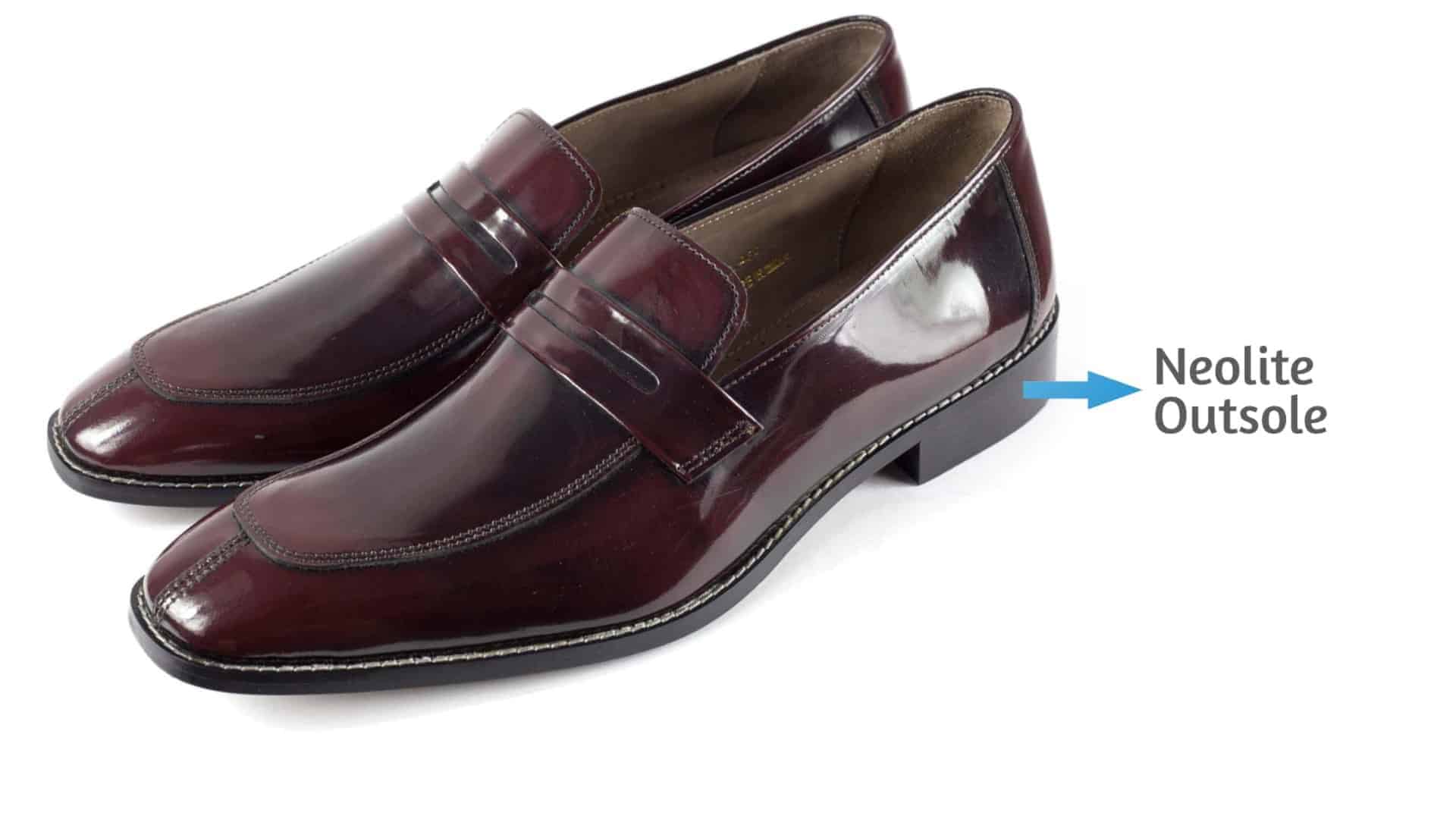
Moreover, as it is the lowermost part of the shoe, it needs to satisfy other demands. Not only should it be able to withstand the weight of the wearer, it should also not wear easily with the friction of walking on the ground.
3. The Insole
This refers to the material found in the interior of the shoe, that touches the underside of the foot, or the sock. It is almost always made of leather, but can also be made of other fabrics. The leather used here is generally softer, for comfort. The insole lies directly above the outsole.
4. The Welt
In shoes that are of premier construction, a strip of leather runs around the outsole and forms its border. This is known as the welt, and its function is attaching the outsole to the insole and upper. It seals all the components in between. There are various ways of constructing a welt including the Norwegian Welt and Goodyear Welt. The latter is more popular as it is durable and weatherproof.
Cheaper shoes are glued, and hence are of a lower quality.
5. Footbed Filler
This is the layer which is found between the outsole and the insole. Cork fillers are used in quality shoes. The cork filler creates a unique and personalized fit over time. The footbed filler is a layer that is never seen, but creates a significant difference to the feel of the shoe.
6. Shank
A metal shank is provided between the insole and outsole to provide structure and support to the arch of the foot.
7. Backstay
This connects the quarters on each side. It runs up from the sole, behind the heel.
8. Saddle
This piece of leather runs over the instep, reaching down to the sole. At times, this is made with a contrasting piece of leather.
9. Foxing
This is another optional component in dress shoes. It is found around the ankle opening, as trimming. It is used generally in brogues and wingtips.
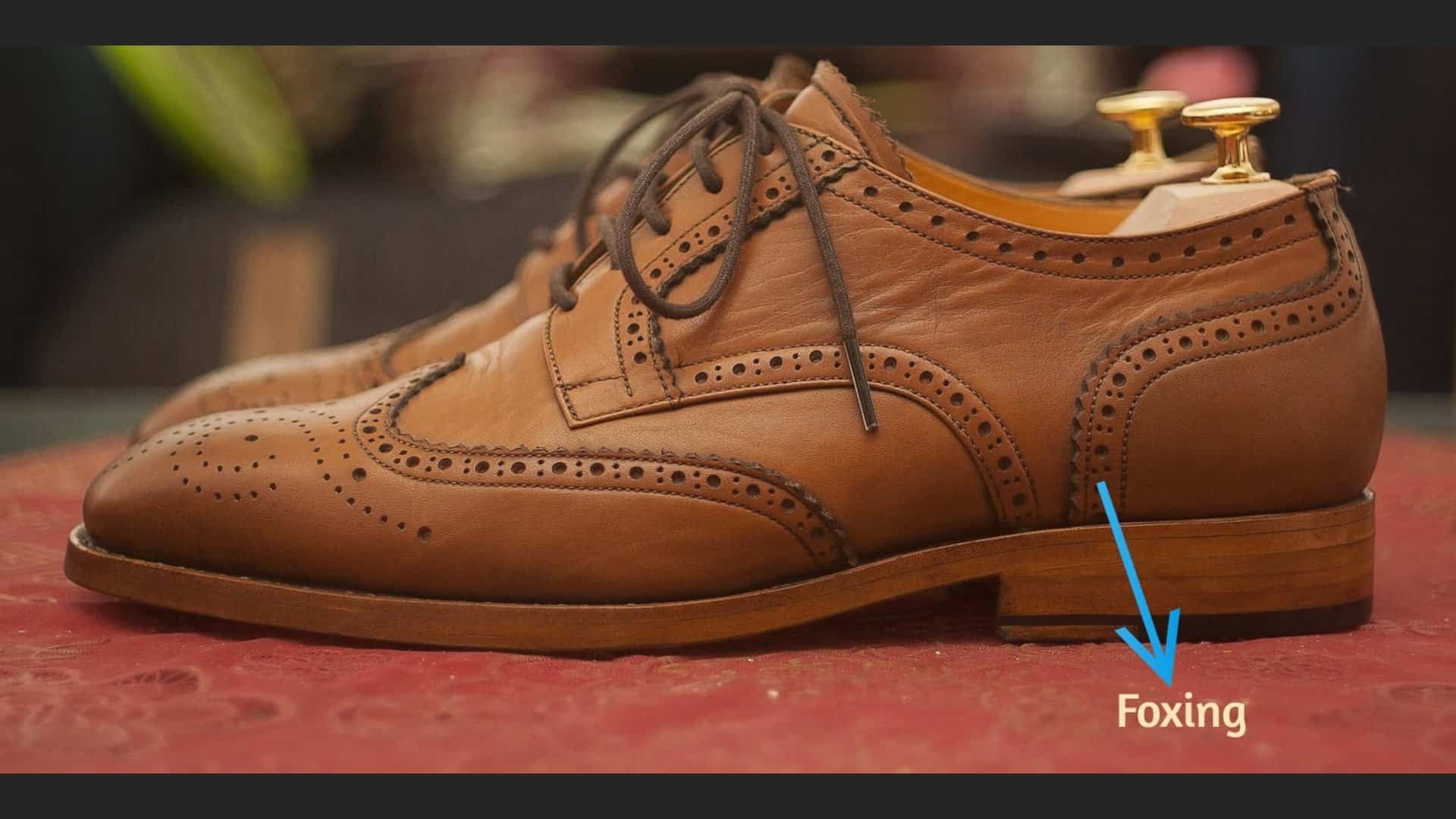
Now that you have read about a dress shoe's parts and how those parts come together, let's dive into the next category of information regarding dress shoes. This section of information will segregate dress shoes into different types.
TYPES OF DRESS SHOES
1. Plain Toe
Simple, Elegant, Clean, and Minimal. The Plain Toe detail is the simplest example of a dress shoe. It is often the most formal, as well. The Plain toe has no toe cap, or brogue detail. The vamp also has minimal details.
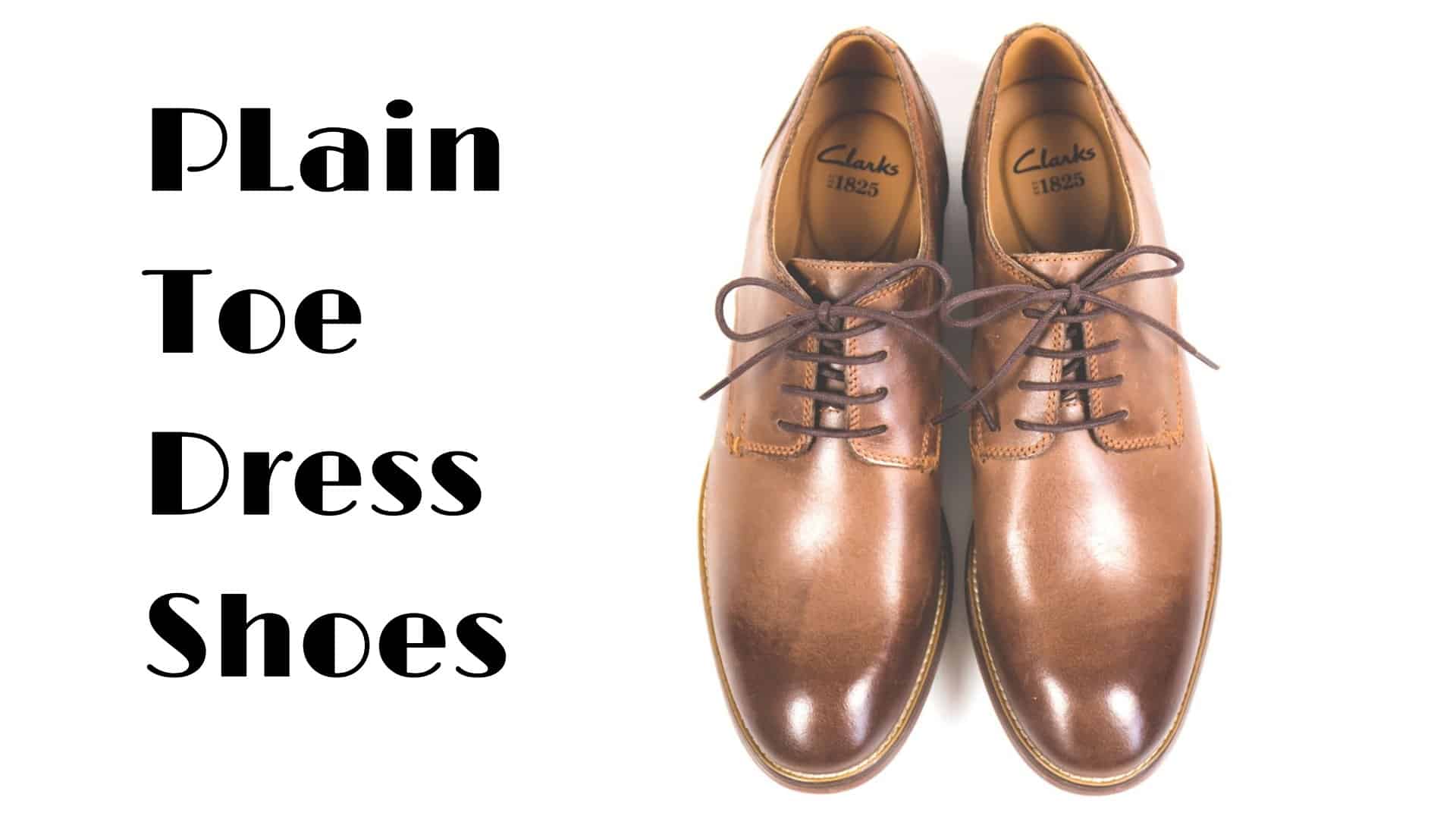
2. Cap Toe
This is a component that might not be found in all shoes. It is optional, and often not seen in whole-cut shoes. It is a strip of leather, which when stitched over the toe, provides an additional layer of durability and strength. It also has an aesthetic appeal. If the toe cap is out of sight (and stitched below the upper) it is called as a Puff.
The Cap toe is appropriate for formal occasions. Oxfords are the most popular form of dress-shoes with cap toes, but they are also found in other shoes.
3. Split Toe
The Split or apron toe, has a seam that splits the tow of the shoe. It starts in the middle of the shoe, at the toe region and ends at the welt. The split toe is more common in casual shoes.
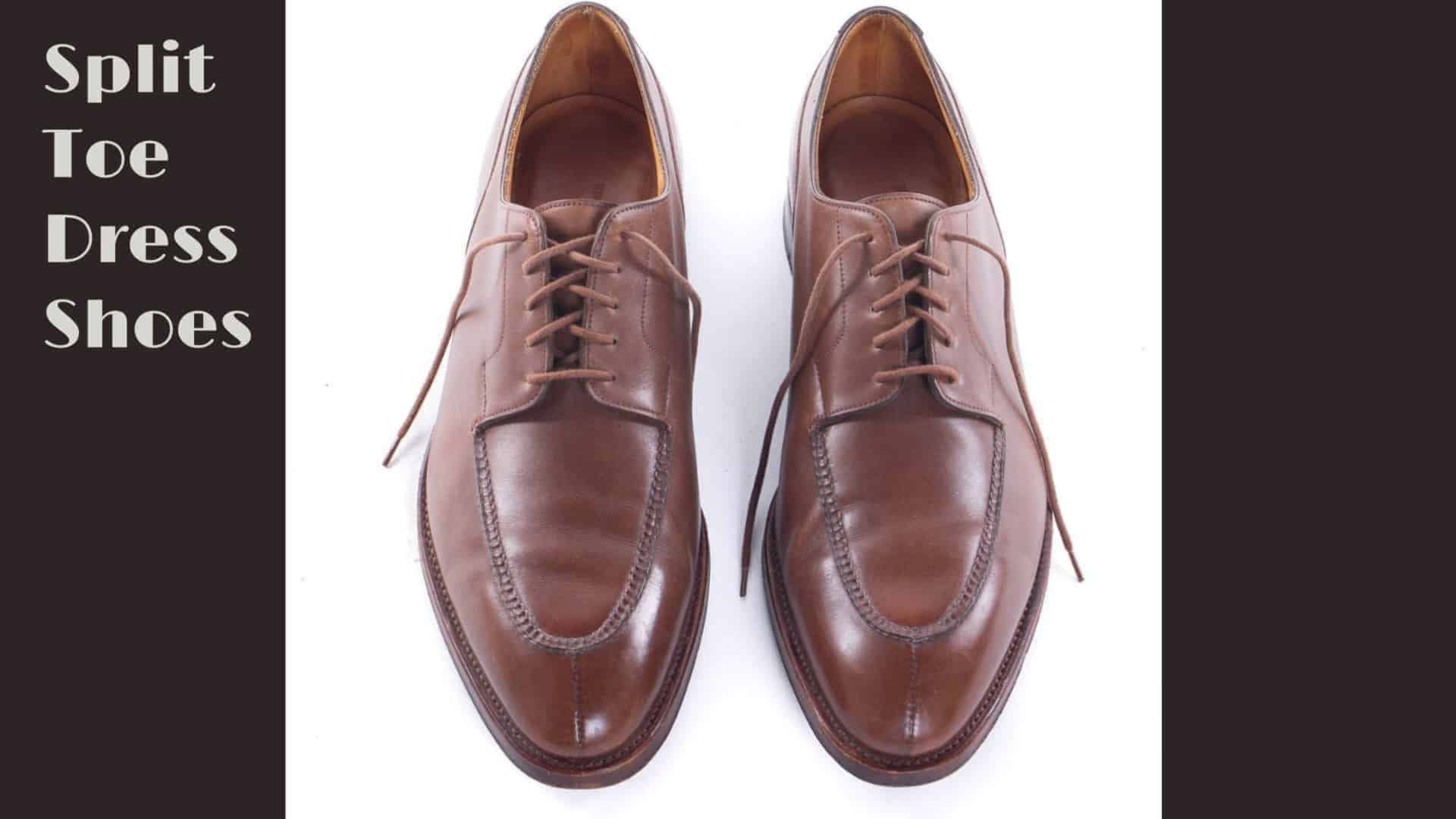
4. Round Toe
This detail refers to the toe being rounded – neither square nor pointed.
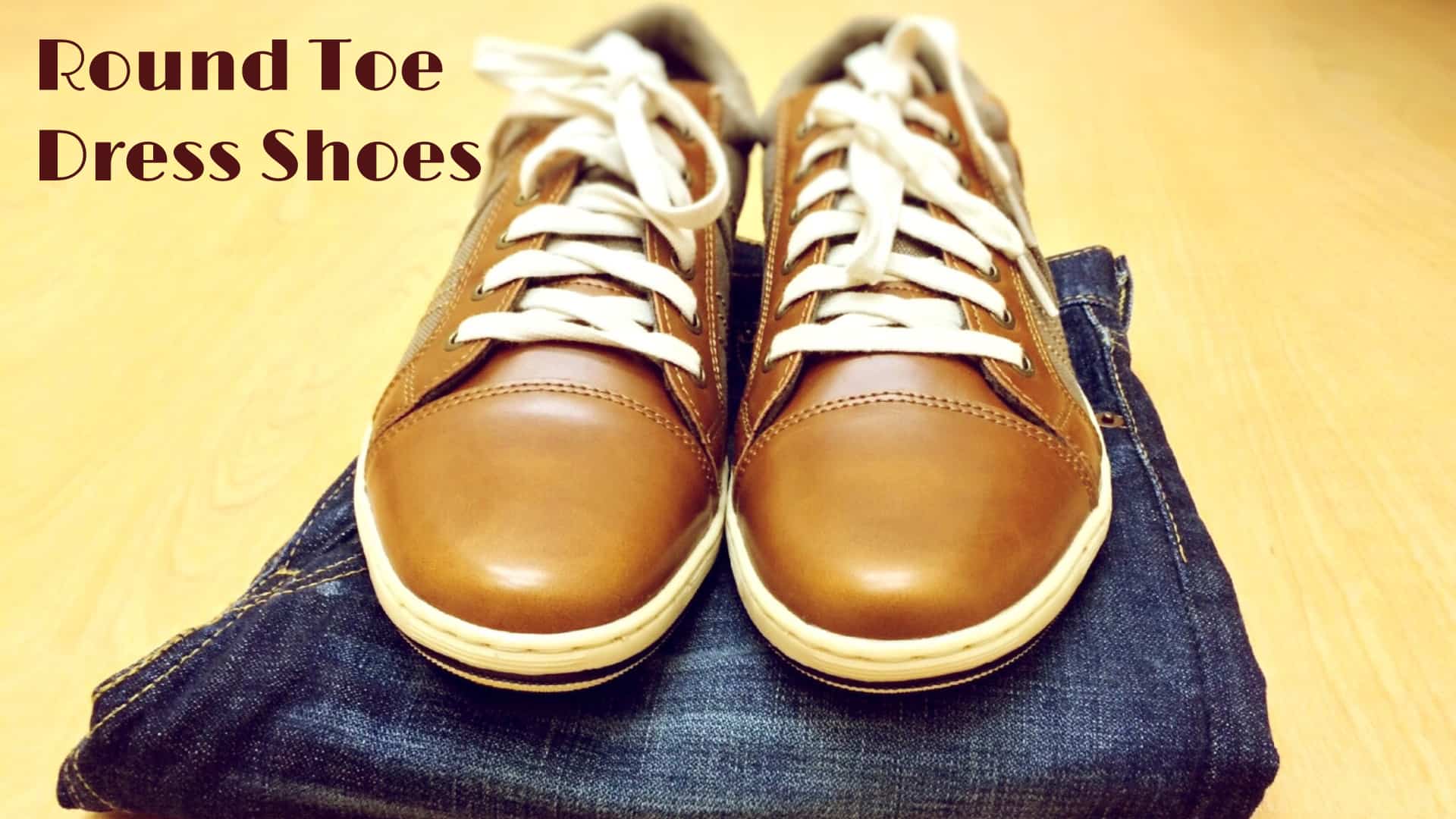
5. Chisel Toe
This is the square toe shoe, which is quite rare to find. It looks good on an Oxford, and also on Chelsea boots. (Although, it makes the latter look a bit more tough)
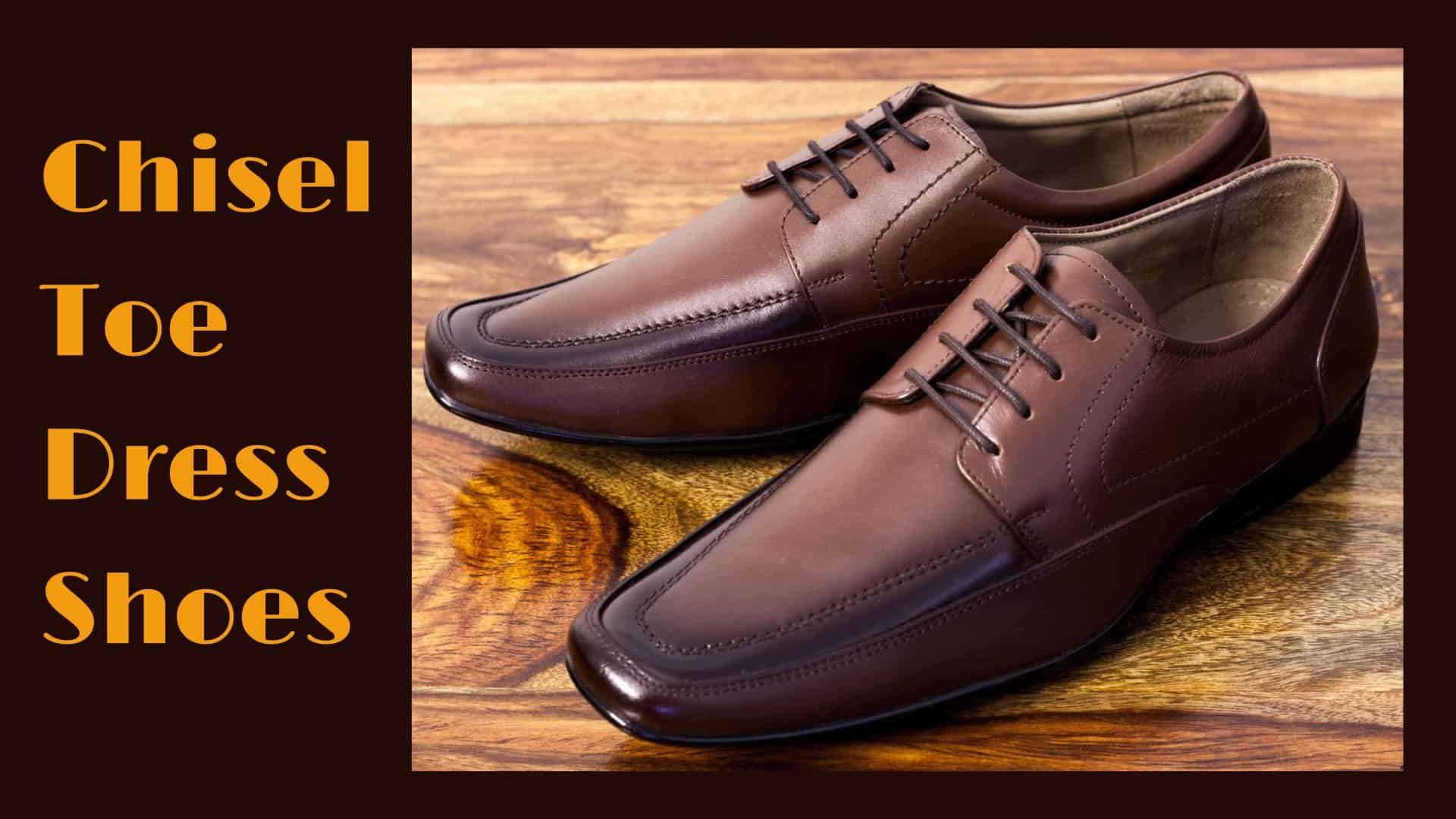
6. Wingtip
Wingtip dress shoes, are those which feature a pointed cap toe, which extends along each side of the shoe. It looks like a W (or an M, based on how you are looking) from up above. It is a less dressy version of the Oxford and Derby, but is still appropriate for formal events.
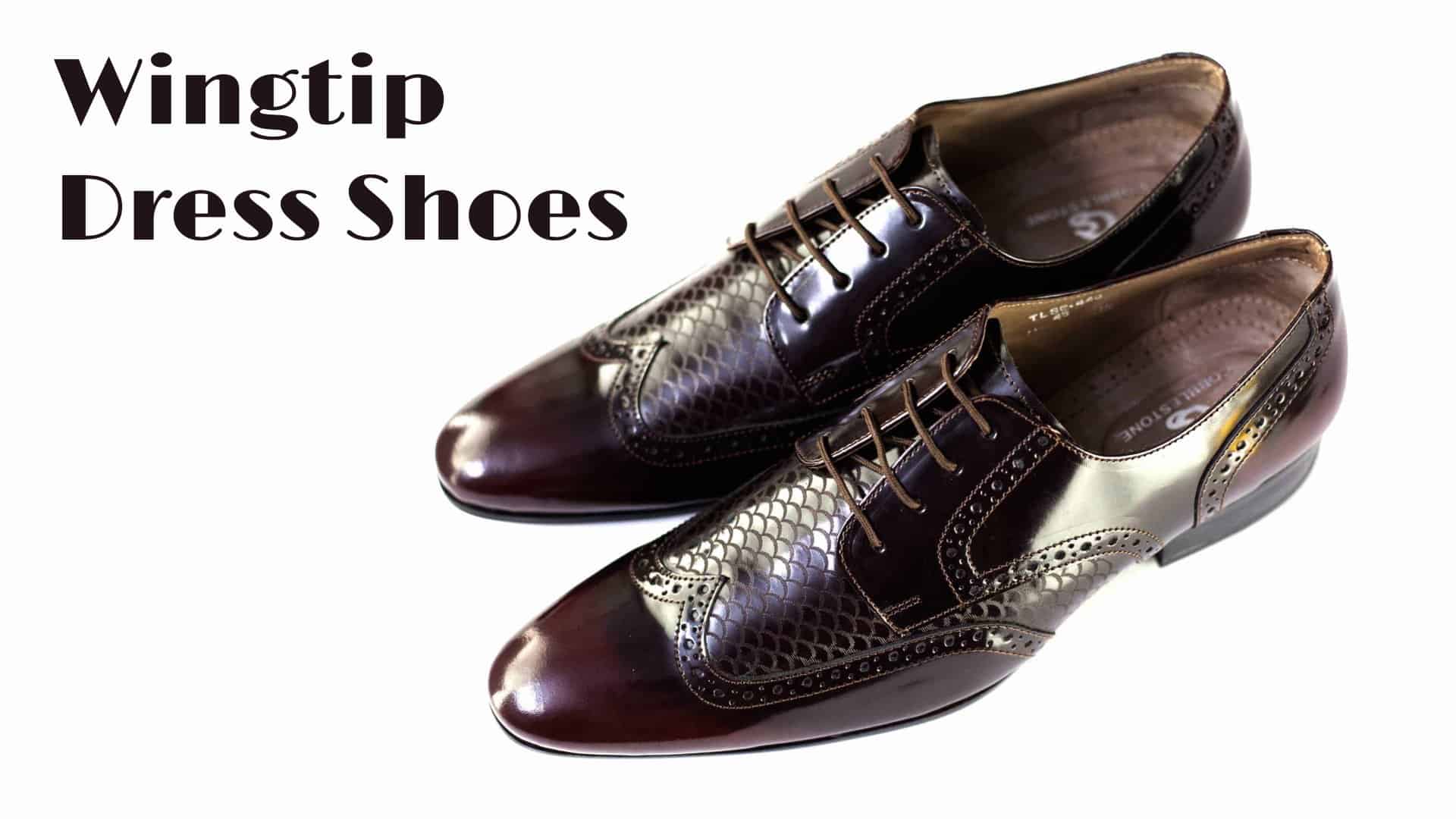
7. Semi Brogue
Derby or Oxfords, which have decorative perforations and cap toes are known as Semi brogues.
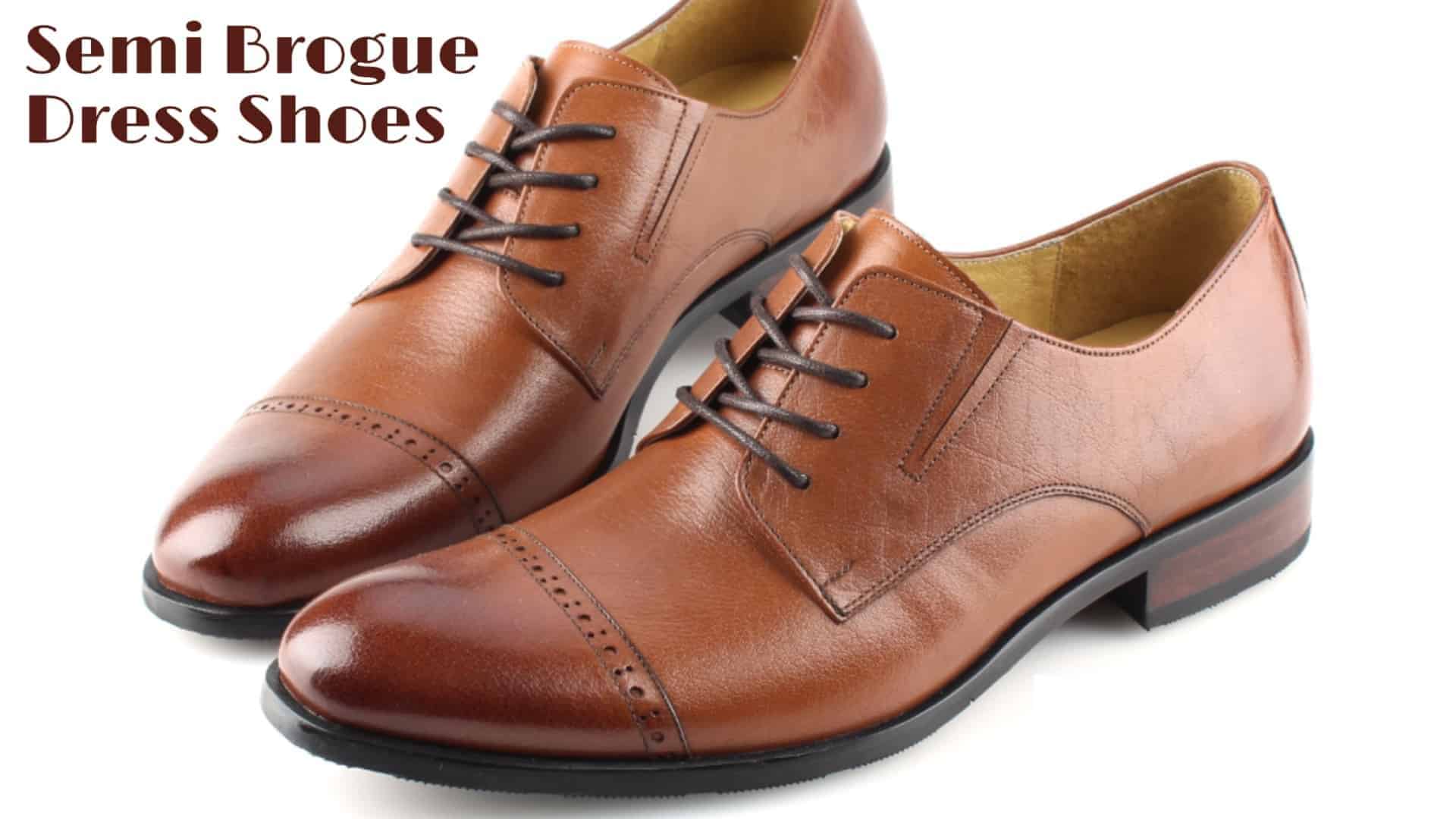
8. Medallion
Derby or Oxfords, which have decorative perforations at the toe are said to have Medallion Brogue detail.
9. Full Brogue
This detail is an amalgamation of a semi-brogue and a Wingtip.
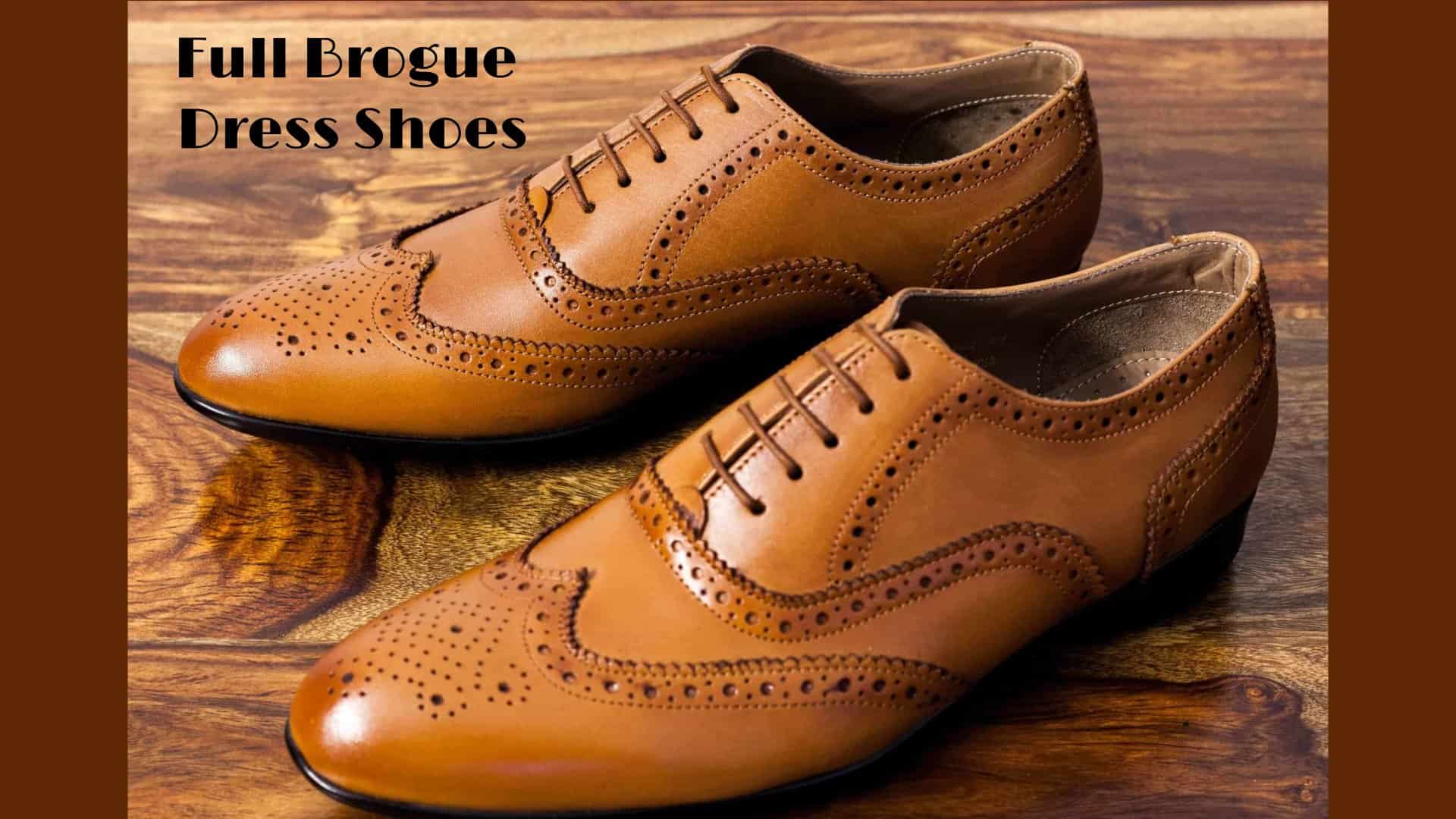
10. Quarter Brogue
This detail is similar to the semi-brogue, but the perforations at the toecap are not present.
11. Longwing Brogue
These are unusual versions of the wingtip shoe – with perforations along the full length of the shoe. These perforations meet at the center of the heel.
12. Whole Cut
When the entire upper of the shoe is made with one leather, it is called a whole cut. It is the ultimate elegant shoe, and is perfect for formal occasions and for balls and weddings.
13. Tassels
Tassels are details that are added to shoes to make the wearer look hip.
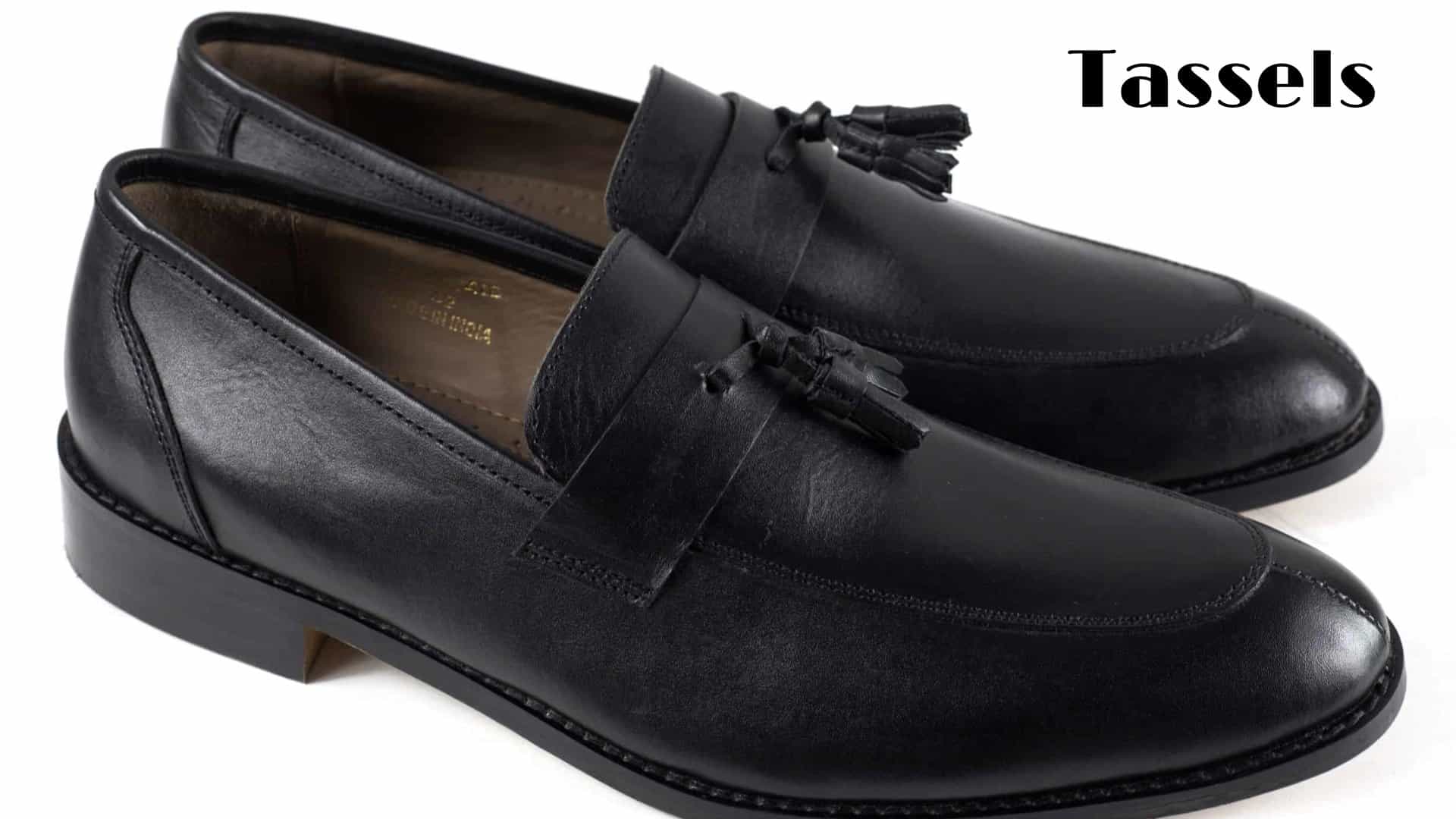
14. Kilties
Kilties are fringed leather decorations that can be added to the shoe.
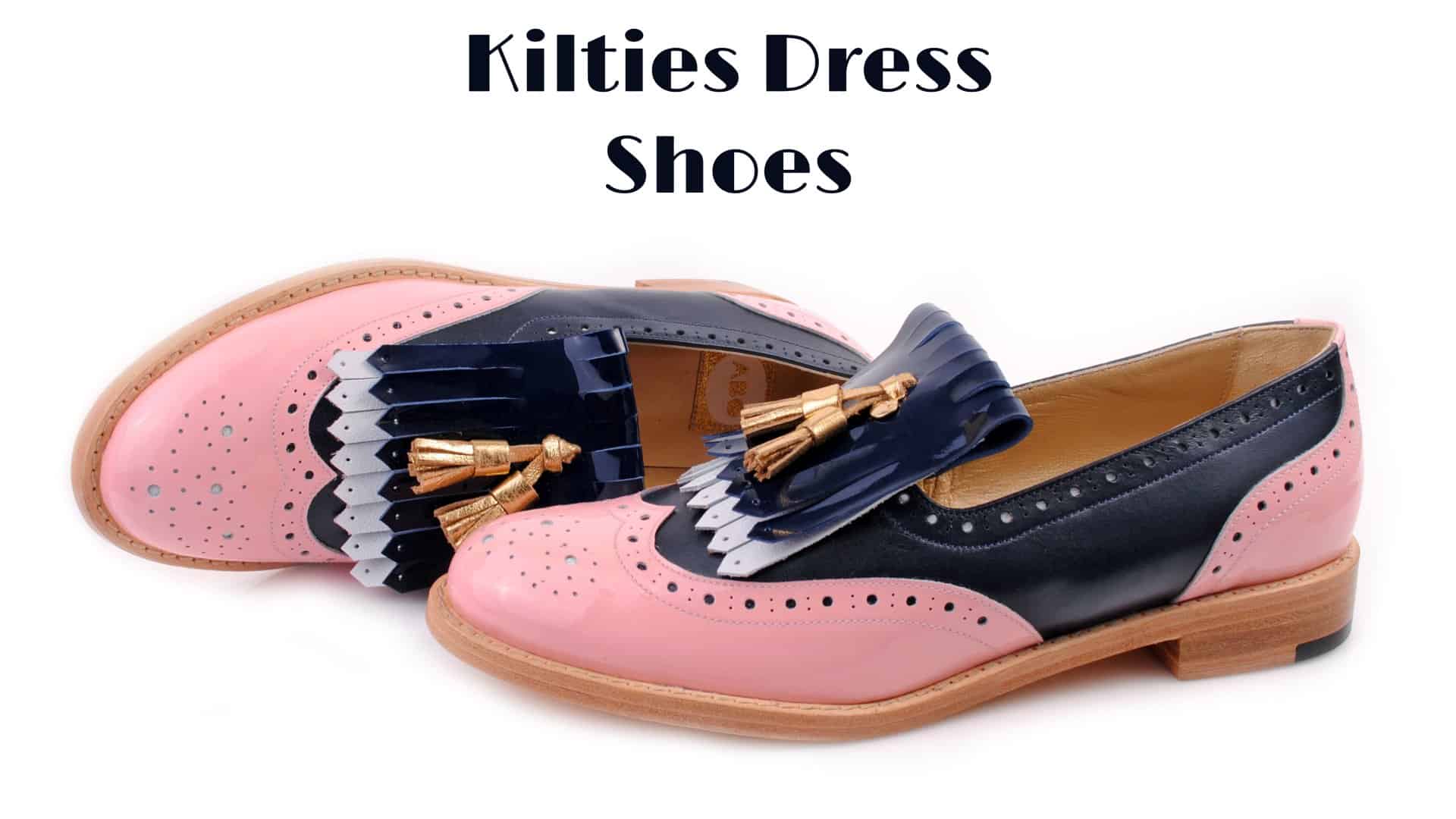
CONSTRUCTION OF DRESS SHOE
The construction of a shoe is extremely important. A good quality shoe lasts long only if its construction is done properly. With proper maintenance of the shoe, it can last for years. Therefore, it is extremely important to choose wisely.
1. Cemented Sole Construction
In this construction method, the sole is attached to the upper using an adhesive known as cement. It is an extra strong glue capable of withstanding heat and friction (to an extent). Cementing is usually used for rubber soles. They are also known as glued or bonded soles.
Chukkas, sneakers, and bucks use this method of construction. It is quick and inexpensive, making the price of the shoe less (compared to the Welted shoes).
However, the cemented shoe cannot be repaired if the sole starts detaching from the shoe. If that happens, however, the sole must be replaced. Re-soling (ability to reattach the sole to the shoe) becomes difficult in the cemented sole construction.
2. Goodyear Welt
The Upper of the shoe is attached to the insole and outsole using the welt. The cavity formed in between is filled with a material (known as the footbed filler). Usually, cork is used as the filler. The sole is attached to the welt using a stitch as well as an adhesive.
The Goodyear Welt is comparatively waterproof, and reduces water penetration. Resoling is relatively easy (as long as there is no damage to the Upper). The footbed filler makes the shoe more comfortable over time and ensures strength and durability of shoes.
However, this method of construction is more expensive than cemented sole construction. The complicated construction puts the shoes constructed using this technique in a higher priced range.
3. Blake Stitch Method
The Blake Stitch Method involves stitching of the upper to the sole. The upper is wrapped around the insole and stitched to the outsole and insole. As the stitching is done on the inside of the shoe, it is not handmade. The stitching is done by machine. The absence of any stitching in the exterior gives a very sleek look to the final shoe. The shoes are lighter in appearance and weight, and are flexible. Since there is no welt, the shoes constructed with this method wear out quickly.
The Blake Stitch is less expensive (in comparison to the Goodyear Welt) but is quite durable. The flexibility provided by the Blake stitch makes the shoe comfortable and beneficial for movement. However, the stitch is not water resistant – as the sole has fewer layers. Although, this depends entirely on the fabric used in the sole. Also, re-soling could prove to be difficult if the cobbler is not skilled at (or doesn’t have) the Blake machine.
4. Norwegian Welt
This method attaches the sole of the shoe to the upper, in a method developed in Scandinavia. The upper is stitched such that the welt is flush with the upper and the sole. It creates a beautiful look for boots. This technique creates a durable and stiff construction.
DRESS SHOE STYLES
Now that we have understood a lot about dress shoes, it's time you find the right one for yourself. There are various styles of dress shoes for different occasions and purposes. So, let's dive into the various styles of dress shoes that there are...
1. Oxfords/Balmorals
Oxfords (or Balmorals after the Balmoral Castle) orginated from Scotland. They are laced up and tied to keep them secure on the wearer’s foot. The pieces of leather are sewn together at the bottom to create a closed lacing – which gives it a sleek appearance. Another distinguishing feature of an Oxford dress shoe is the toe cap. Toe cap is an additional piece of letter that is sewn over the toe section of the shoe. The facing of the shoe is sewn under the vamp for the Oxfords.
Oxfords are generally the standard shoe to wear with most suits. A variation of the Oxford – the White Buck shoes – are chosen for summer suit fabrics like seersucker.
2. Derbies
The Derbies are lace-up shoes, similar to the Oxfords. However, these are less formal as they have open lacing. They usually come in shades of brown, with brogue patterns. The open lacing of the Derbies makes the shoe look versatile and robust.
Derbies come in various colours including oxblood, cognac and various other shades of reds and browns. The facing is open at the bottom and some brogueing is done. Derbies are generally chosen as companions for chinos, jeans and sometimes, suits. They can also be worn with trousers and a sports jacket.
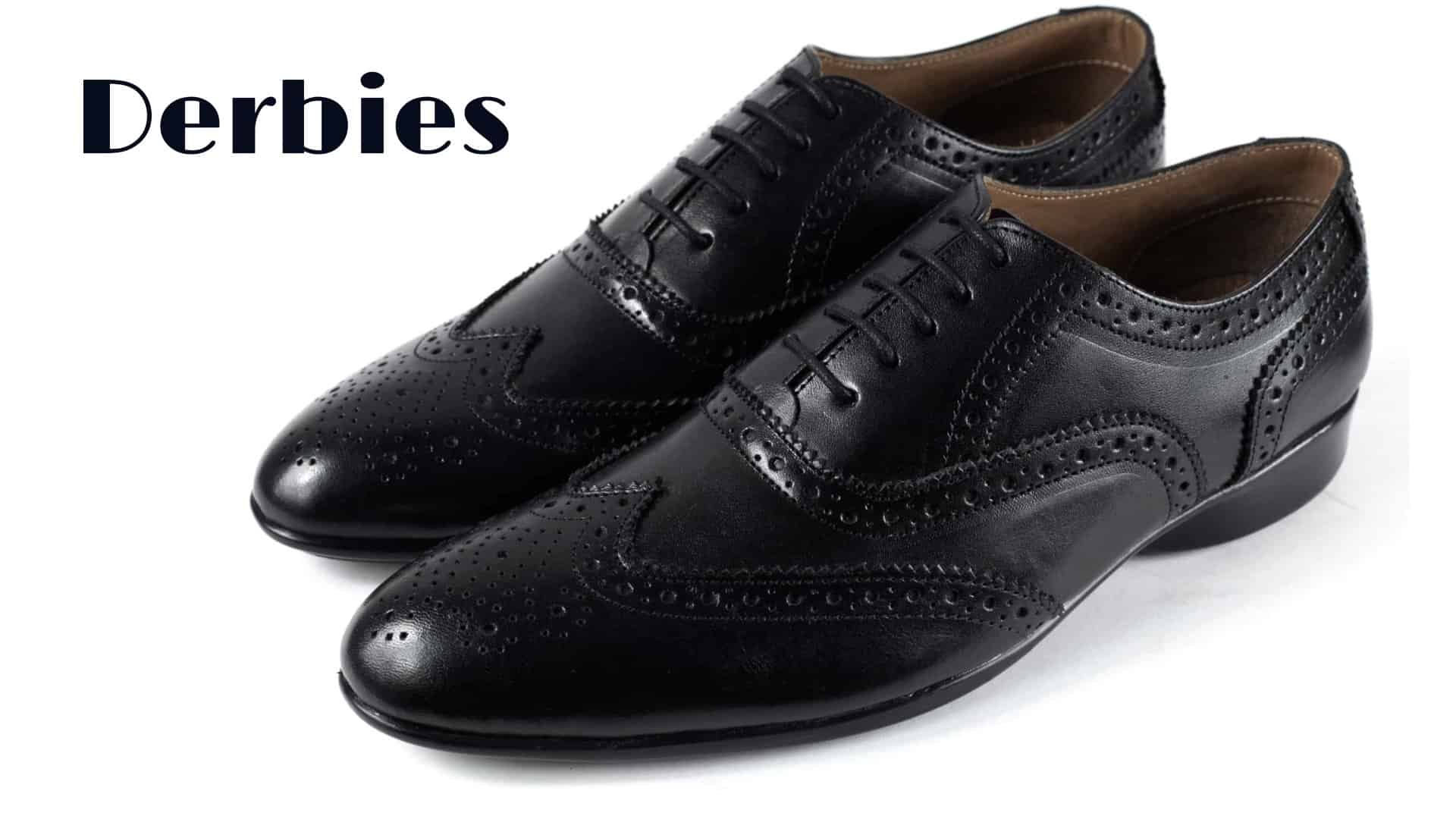
3. Monk Shoes
A monk shoe (or a monk strap) is one without any lacing. The shoe is secured on the wearer’s foot by a strap with a buckle. The shoe can be traced back to when monks were figuring out an alternative to the sandal.
They are considered as less formal, but are appropriate for business formal occasions. The Monk shoe, with it’s bold buckle are considered as a stylish alternative to a lace-up dress shoe.
Single monk straps are timeless and understated, but the double monk straps – which generally have a toe cap - give a military feel to the shoe.
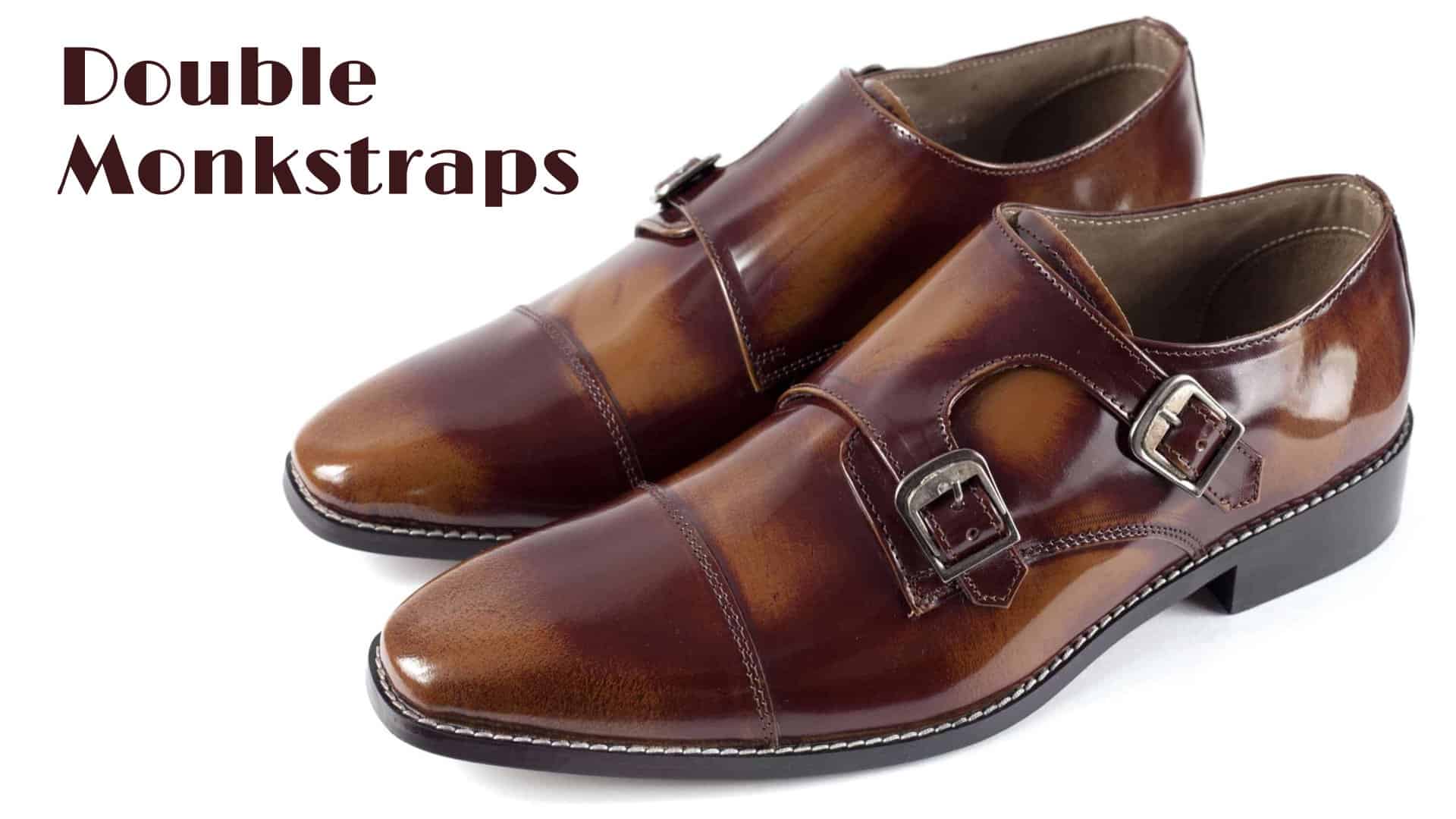
4. Loafers
Slip-ons or Loafers are an easy to wear footwear which give a laid-back look to its wearer. They can be worn for formal as well as casual occasions, but are commonly chosen for the latter. Loafers are (traditionally) lace-less, but they can have a heel.
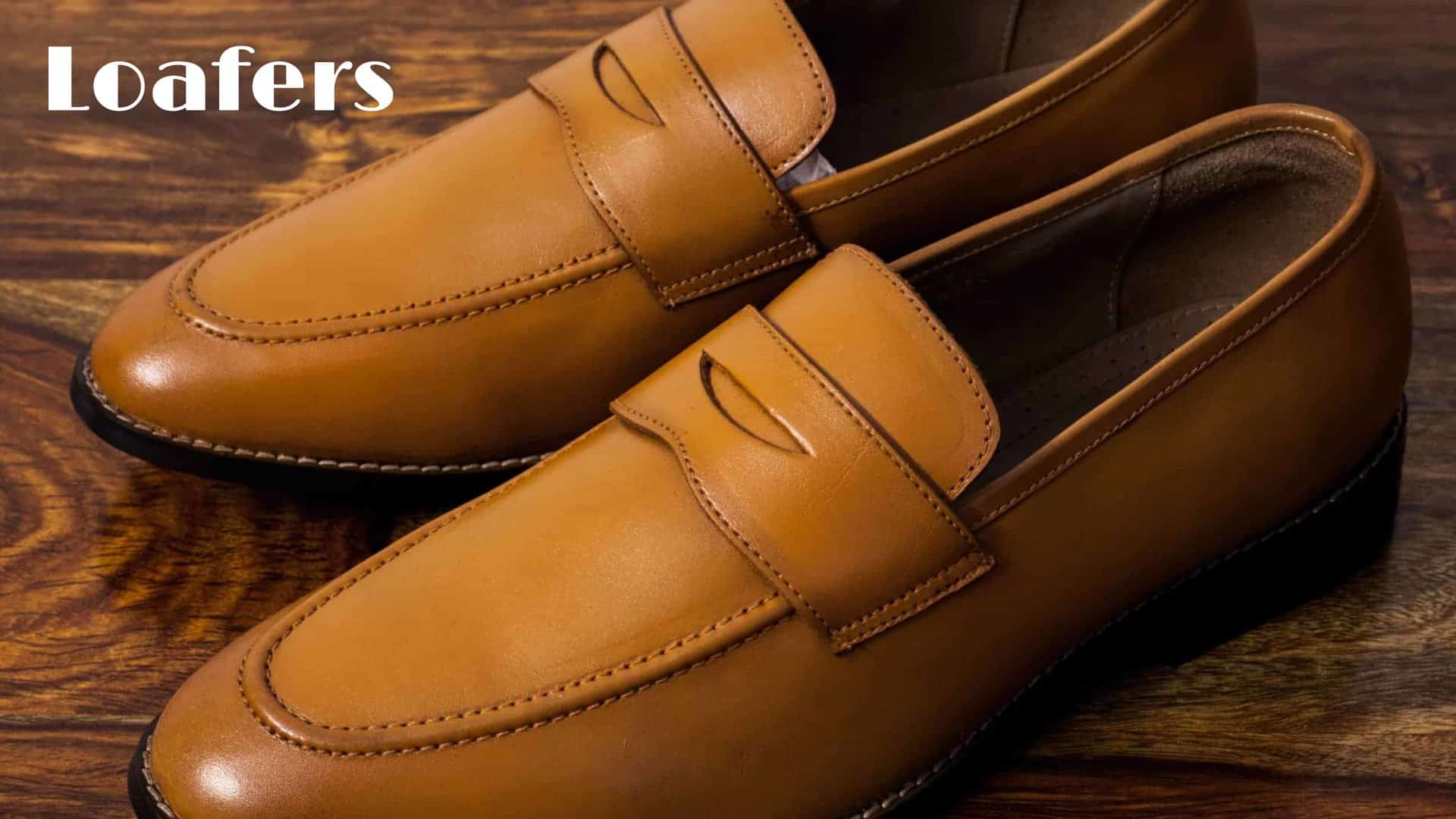
5. Moccasins
Similar to the Loafers, the Moccasins are easy-to-wear shoes which are a skillful blend of style and comfort. Moccasins can have laces or tassels as a purely aesthetic element but are predominantly heel-less.
6. Chukka
The Chukka is ankle high boot with high facing eyelets. They are made from leather and suede, and are often brown in color. They are worn for casual events with jeans or with suits. However, it is recommended not to combine a suit with a crepe-soled chukka – which is also called a desert boot. Desert boots are more casual than the chukka in material and in construction.
7. Chelsea Boots
The Chelsea boots were popularized by British bands (like The Beatles) in the 1960s. It is a perfect contemporary addition to the shoe collection for a rock ‘n’ roll fan.
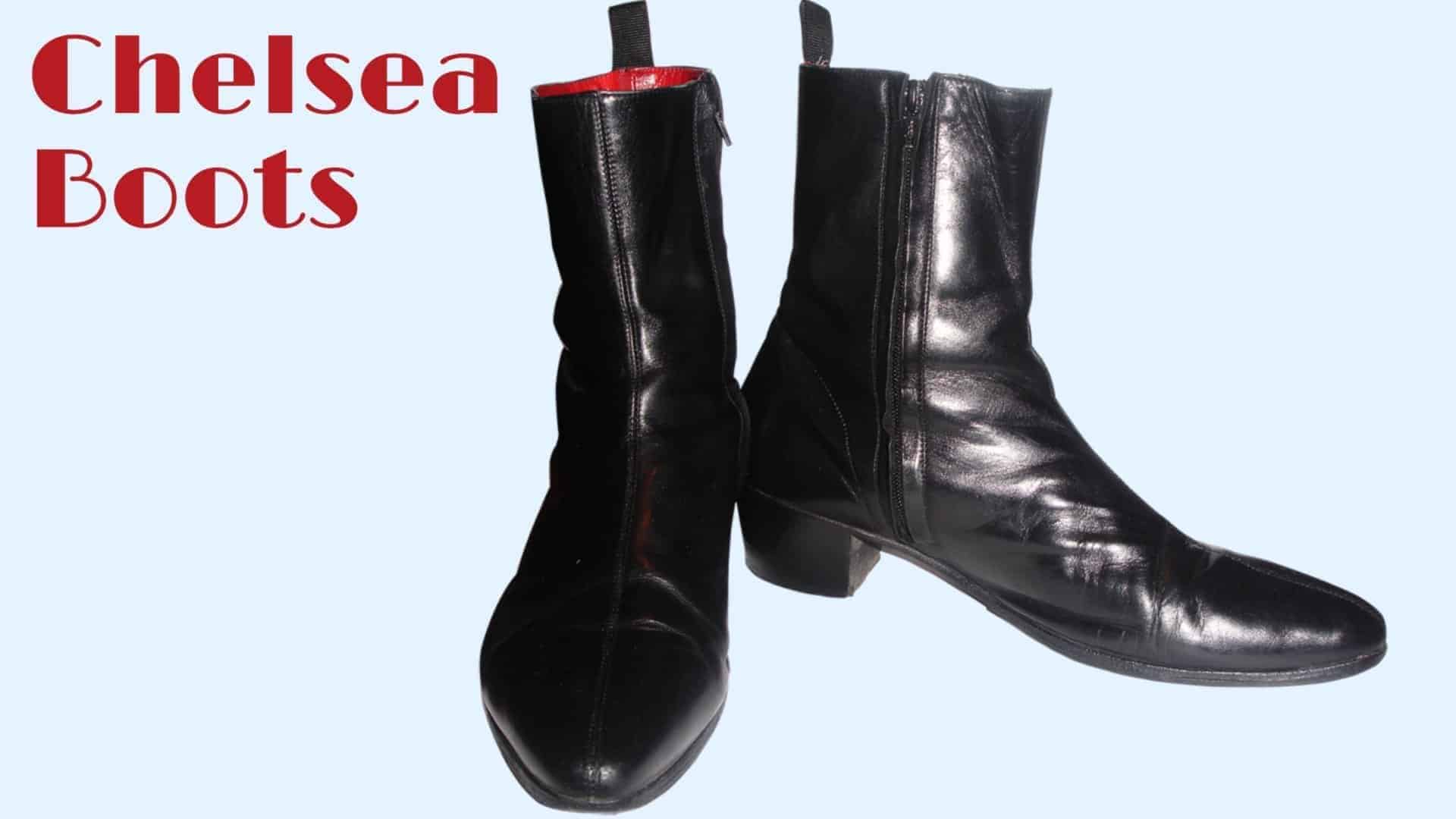
Conclusion
Know that your dress shoes might be a bit of an investment. When you are buying them, take into consideration the occasions and places that you’d be wearing them, as well as how often you will be wearing them. If you are going to be wearing them only for occasions like weddings, you don’t necessarily need to empty your wallet. However, if you are going to be wearing them regularly, you might as well spend a bit more.
When you are choosing a pair of shoes for yourself, choose wisely. Shoes are an essential part of your wardrobe. Your choice should match your personal style, and go along well with the clothes that you wear. Add your own style to your shoes with colorful laces or by using a unique lacing method.
